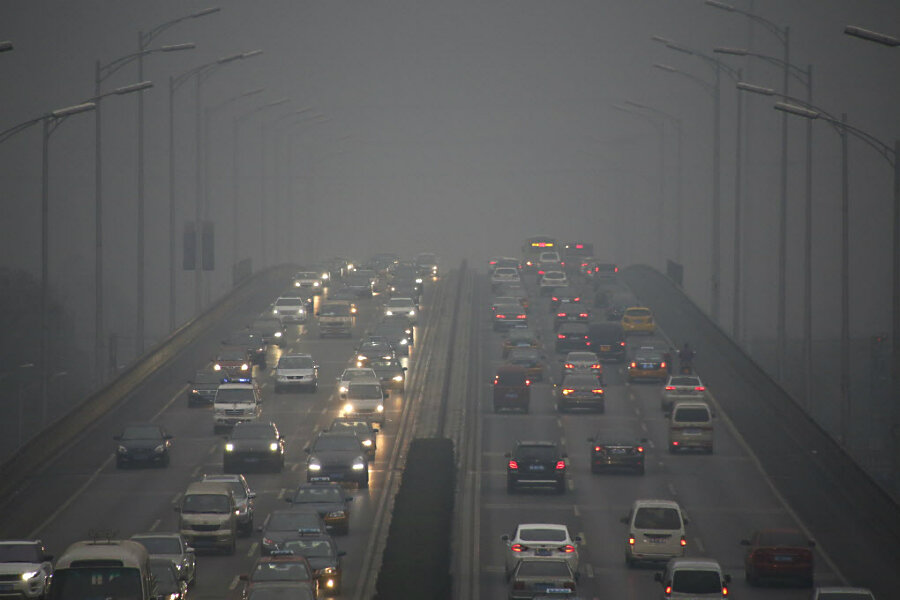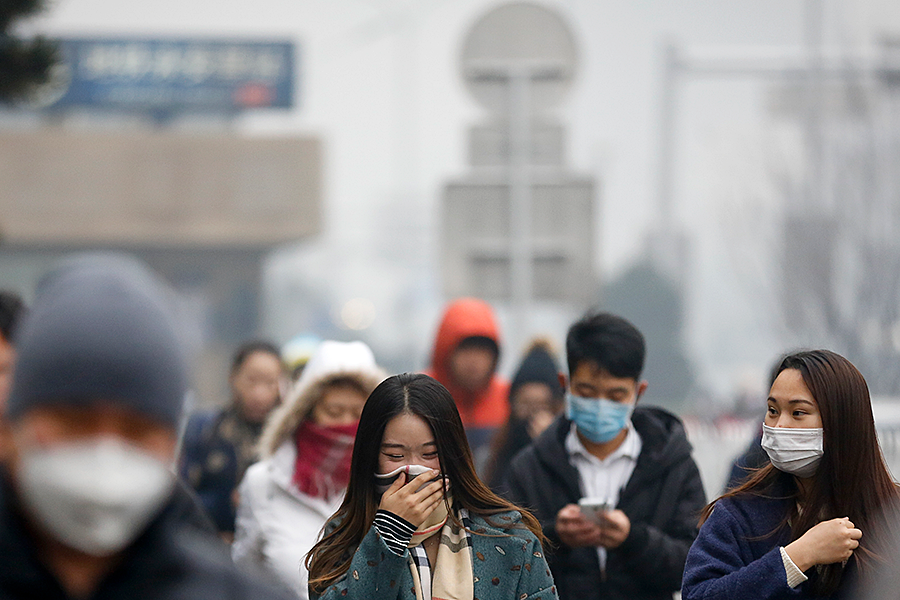Beijing smog: What makes some cities cleaner than others?
Loading...
Beijing is in a state of emergency until Thursday as thick, toxic smog blankets the city. Schools have been ordered closed, driving is restricted, and some outdoor activities have been banned as deadly particles suffuse the air above the city.
There are several reasons the city is choking, as The Christian Science Monitor reports. It has a prodigious population of about 20 million people (and growing), more of whom are driving than ever before. And the population uses energy that’s supplied mostly by coal-burning power plants, the dirtiest source of energy in the world.
The city's location in the shadow of high mountains has long been considered good municipal feng shui and a smart way to keep foreign armies at bay, but has proved problematic when it comes to air pollution, trapping dirty air over the city.
But there may be reasons for hope.
Beijing can actually count its dense population as an advantage. Large, crowded cities with good public transportation and a layout conducive to walking and cycling are more efficient and less polluted than large cities without those features, according to urban planners.
This partly explains why cities like New York tend to appear at the top of lists of the most efficient cities when counting greenhouse emissions within its boundaries from cars, chimneys, power plants, and industrial facilities.
“Bigger cities and denser, more compact living patterns offer a double benefit,” explained and urban studies expert Richard Florida in The Atlantic.
“They not only stimulate innovation and leverage productivity,” he goes on, “but also use less energy and generate fewer emissions per person.”
New York uses not only less, but cleaner sources of energy to generate electricity for its more than 8 million residents, including natural gas, nuclear, and hydroelectric.
Emissions are higher in sprawling cities like Houston that require driving and that house energy-intensive industries like oil and gas and manufacturing.
They’re also higher in Los Angeles, which has half the population of New York City, but is built for driving and is surrounded by air-trapping mountains like Beijing.
In fact, as CNN points out, the L.A. of 60 years ago had much in common with Beijing today. The city had the dirtiest air in the world, for the same reasons the Chinese city is choking: an economic boom and a rapid population rise.
"With this followed demands for more power, more jobs, and the rising middle class that did things like buy cars and drive them," the city’s Mayor Eric Garcetti recalled at an event earlier this year, according to CNN.
He said the smog was so bad during World War II, “some thought it was a chemical weapon attack by Japanese forces during the war."
But the federal Clean Air Act first launched in 1963 and the 1970 emission standards for cars helped the city recover its air, though it’s still among the most polluted US cities, according to the American Lung Association.
Chinese officials have promised at the Paris climate talks and before that, to cut its coal use in order to address both air pollution and carbon dioxide emissions.
“This week in Paris, China is rightfully getting credit for its policies to tackle climate change,” Alex Wang, a law professor at the University of California in Los Angeles, who studies Chinese environmental policy, told the Times.
“But the extraordinary air pollution in Beijing right now demonstrates just how much remains to be done to make these policies work in practice.”







